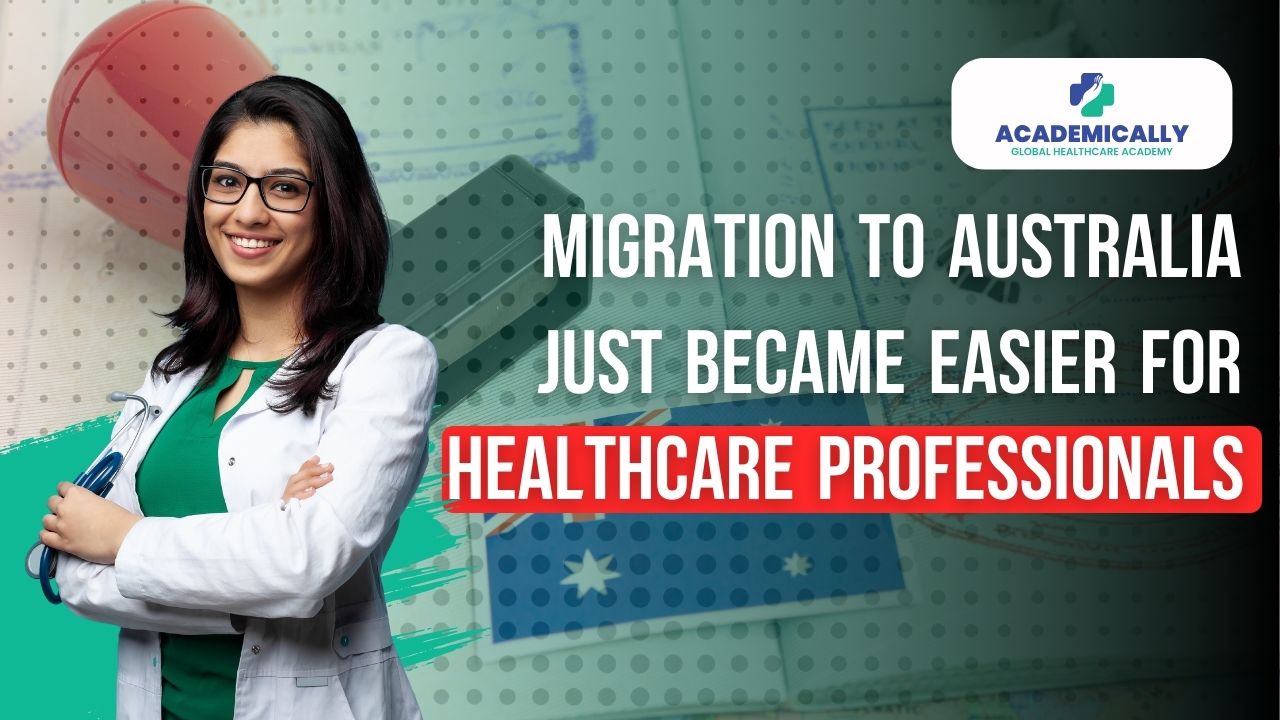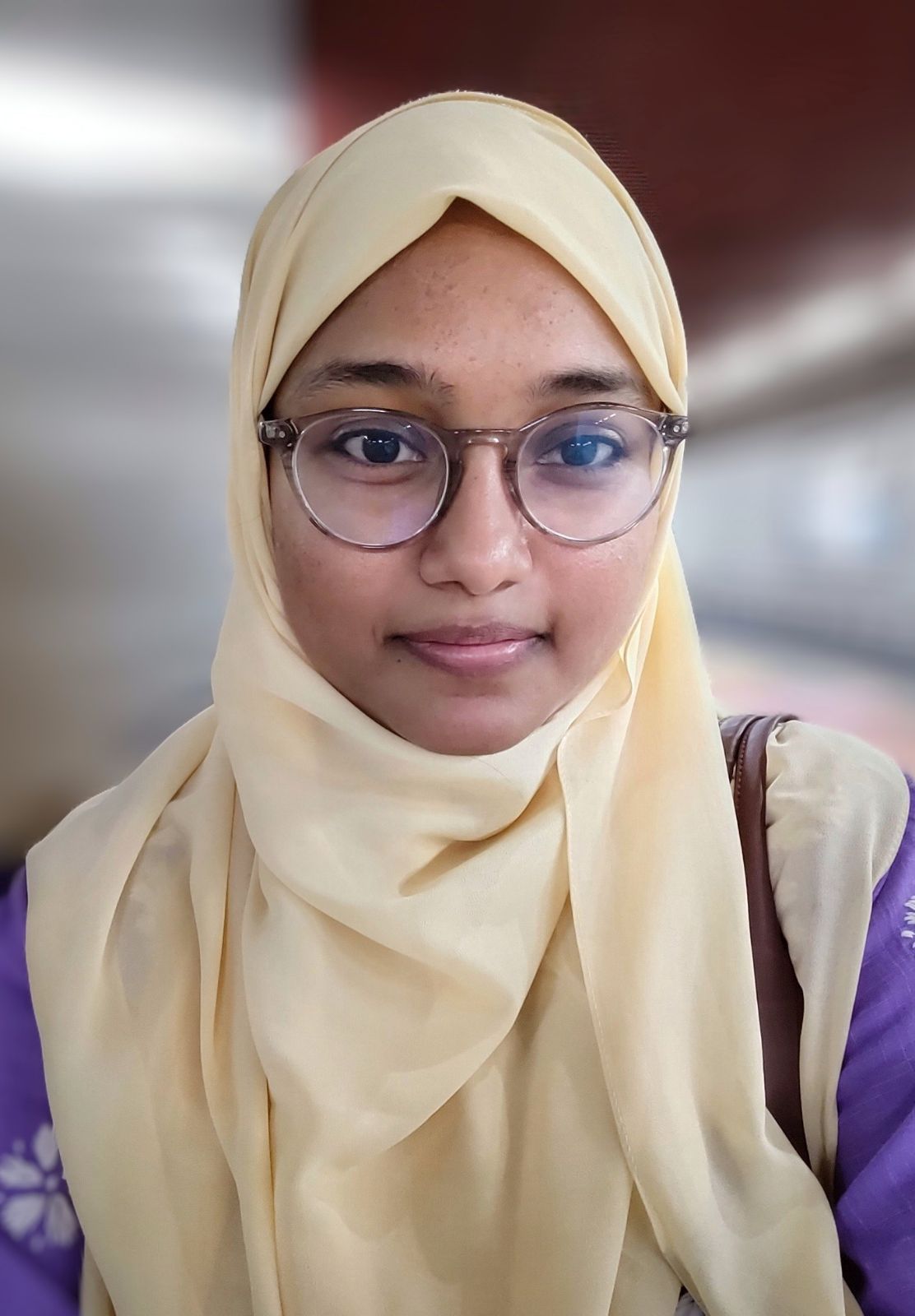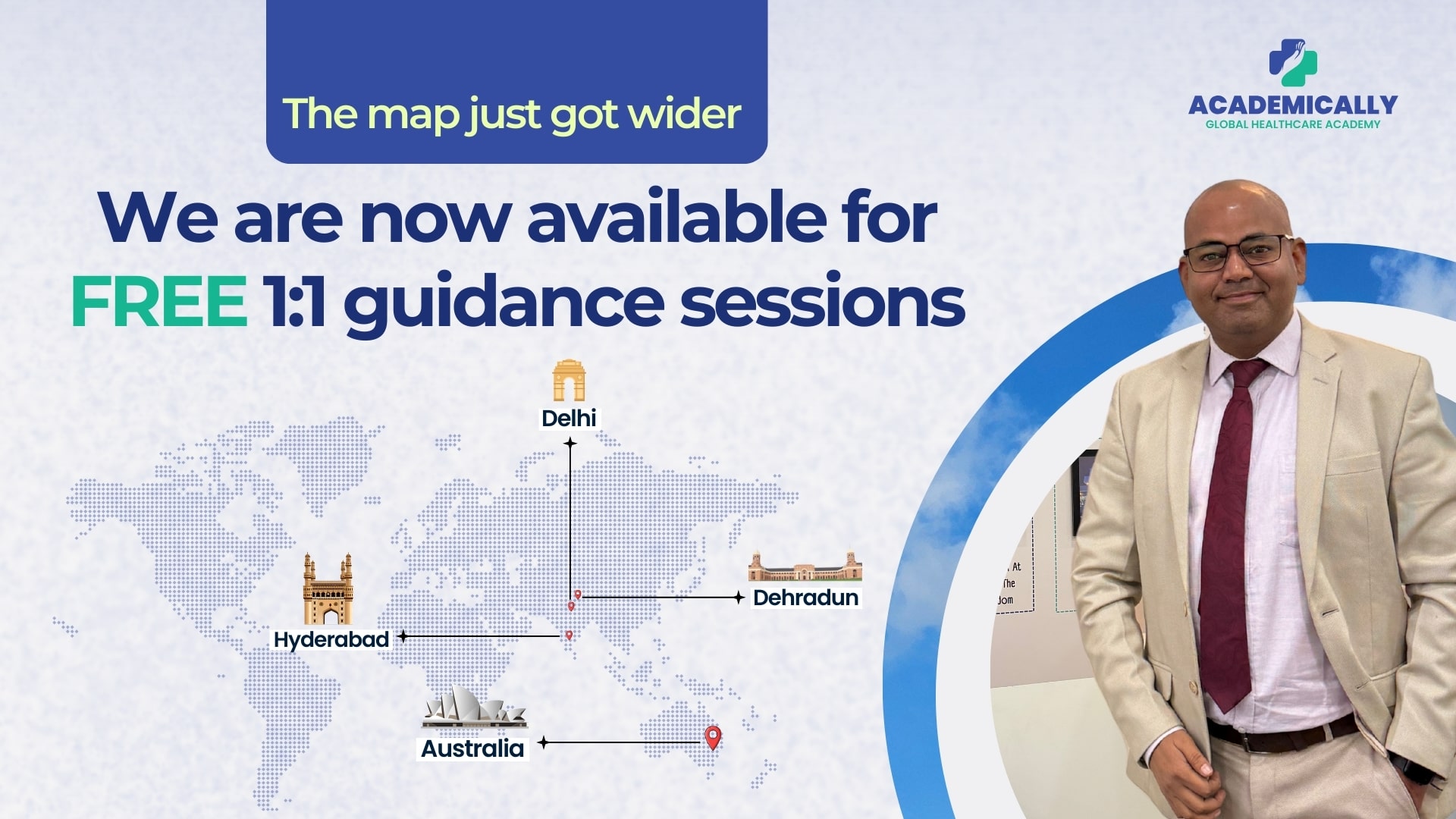Are you a healthcare professional planning to move to Australia? Then you would love this news. This year alone, more than 4000 healthcare professionals, including pharmacists, chemists, cardiologists, nurse practitioners, and physiotherapists have received an invite for EOI from the Australian government.
Australia is the one country that has welcomed people from around the world for decades. And with the ease of getting a visa and PR, the country is a dream destination. Now, there is even better news for healthcare professionals wanting to migrate to Australia. The government has updated its Migration Program Planning Levels. What is it and how does it affect you? We will unravel this in this blog.
Welcome to Australia’s Migration Playbook: Smarter, Simpler, Tailored for You
What Are Migration Program Planning Levels?
Every year, the Australian government sets a limit on the total number of permanent migration places available across several visa streams. These planning levels guide how many permanent visas are granted. This decides the migration trends and manages expectations.
There are 4 main categories or levels:
- Skilled workers
- Family members
- Humanitarian reasons
- Special eligibility
The combined total can’t exceed the limit set.
Australia’s 2025–26 Migration Snapshot: A Steady Course
For the 2025–26 program year, Australia has kept its migration limit at 185,000 places. This remains unchanged from the previous year. This signals consistency in planning and visa availability. It is a green light for skilled professionals, families, and employers alike.
Here’s why it matters:
- Skilled migrants still dominate the quota. The focus remains on filling workforce gaps.
- Visa processing systems face no sudden disruptions.
- Applicants and sponsors benefit from predictability and stability.
Planning Horizon: Going from One Year to Four
Starting this year, Australia is starting a multi-year planning model. It is extending the planning window from one year to four years. This shift is aimed at increasing the coordination in
- housing
- infrastructure, and
- services
This change means migration becomes part of a long-term game plan.
How Is That Immigration Pie Sliced?
The permanent Migration Program comprises three key streams:
a) Skilled Migration
This is often the biggest slice. In 2023–24, about 72% of the permanent program went to skilled visas. This translates to roughly 137,100 places. The rest was distributed via family quotas. The program prioritizes:
- Skilled Independent
- Employer-Sponsored
- State/Territory Nominated
- Global Talent
- Business Innovation & Investment
b) Family Migration
This includes partner, child, and parent categories. Some, like Partner and Child visas, are demand-driven, where there’s no fixed cap. Others (e.g., Parent visas) do come with an allocation. For 2022–23, the program estimated about 52,500 family places.
c) Humanitarian & Special Eligibility
Typically smaller in size, this stream covers those in urgent need, such as refugees, and categories like returning permanent residents.
Australia Need Migrants- Here’s Why
Australian society is held up and bound together by migrants, quite literally. The numbers speak for themselves.
Migrants make up for nearly 30% of the total Australian population. Not only that, they make up for a significant portion of different industries as well. As per the Australian Bureau of Statistics, 6.2 million jobs in the country are held by migrants.
Nearly 15% of the healthcare services rely on overseas professionals. 10% of the science and tech industry is made up of migrants. Nearly 12% migrants support the food industry.
So you see, Australia not only welcomes migrants, it needs them for a functioning society.
The updates to the Migration Program has been made keeping this vital information in mind.
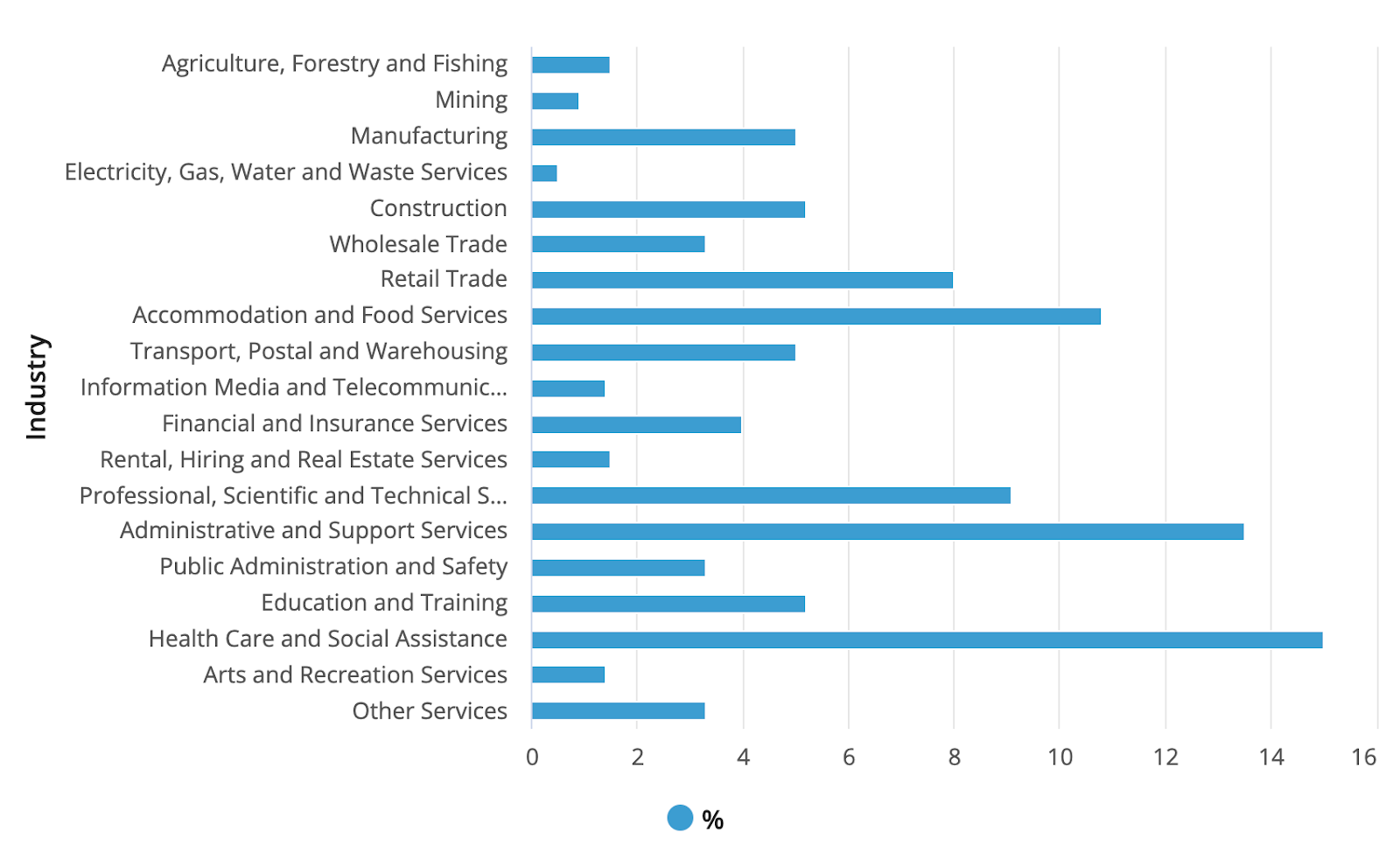
Migrants in Australian Healthcare Sector
Let’s talk about the healthcare sector. It has the lion’s share of migrants, an essential part for the smooth working of the society. The Australian government has been vocal in its invitation for overseas trained healthcare workers into its healthcare system. This is not only because of the skills they bring, but also the shortage Australia is facing.
| ANZSCO | Group | Number Reviewed | % of Reviewed in Shortage |
| 251 | Health Diagnostic and Promotion Professionals | 15 | 33% |
| 252 | Health Therapy Professionals | 13 | 31% |
| 253 | Medical Practitioners | 32 | 38% |
| 254 | Midwifery and Nursing Professionals | 17 | 6% |
| 25 | Health Professionals | 77 | 29% |
| Overall | All occupations | 799 | 19% |
In comparison to overall shortage, the healthcare sector is facing nearly 28% shortage of skilled professionals. Medical practitioners being the highest in shortage.
| ANZSCO | Group | Future demand ratings (% of reviewed occupations) | ||
| Strong | Moderate | Soft | ||
| 251 | Health Diagnostic and Promotion Professionals | 87% | 13% | 0% |
| 252 | Health Therapy Professionals | 15% | 85% | 0% |
| 253 | Medical Practitioners | 0% | 100% | 0% |
| 254 | Midwifery and Nursing Professionals | 0% | 100% | 0% |
| 25 | Health Professionals | 19% | 81% | 0% |
| Overall | All occupations | 33% | 60% | 7% |
The six professions with the highest shortage and strong future demand are:
- Sonographer
- Optometrist
- Orthoptist
- Hospital Pharmacist
- Retail Pharmacist
- Speech Pathologist
So, if you are a healthcare professional, planning to move to Australia, now is the time to gear up for the AMC, OPRA, ADC, and APC exams.
Why It All Matters – The Bigger Picture
Behind the numbers, this program addresses a number of requirements of the country:
- Targeted visas help with labour shortages and increase productivity.
- Bringing families together helps build stronger communities and makes it easier to settle in.
- The humanitarian commitment reflects Australia's values and international responsibilities.
- With longer-term forecasts, the government can plan better for migration with housing and services.
The shift to multi-year planning is especially important. It will improve the coordination between migration and infrastructure development.
A Look Back: How the Numbers Have Evolved
Here's a quick historical snapshot to contextualize the current planning level:
| Program Year | Migration Cap | Notes |
| 2022–23 | 195,000 | Up from 160,000 to meet post-COVID demand |
| 2023–24 | 190,000 | Slight reduction Still highly skilled-focused |
| 2024–25 | 185,000 | Data shows skilled share stable 132K or 71% share. |
| 2025–26 | 185,000 | Same as before. Focus on regional requirements. Skilled: 132,000 (71%) Family: 52,500 (28%) Special Eligibility: 300 |
Here is a glimpse of the number of invitations for interviews sent out to healthcare professionals this year, under different visa streams.
| Healthcare Occupation | 189- Skilled Independent visa | 491- Skilled Work Regional visa |
| Audiologist | 80 | 65 |
| Cardiologist | 80 | 80 |
| Chemist | 90 | N/A* |
| Clinical Psychologist | 75 | N/A* |
| Dermatologist | 100 | N/A* |
| Diagnostic and Interventional Radiologist | 85 | N/A* |
| Educational Psychologist | 85 | N/A* |
| Emergency Medicine Specialist | 80 | N/A* |
| Gastroenterologist | 80 | N/A |
| General Practitioner | 80 | N/A* |
| Intensive Care Specialist | 80 | N/A* |
| Medical Diagnostic Radiographer | 80 | 90 |
| Medical Practitioners nec | 80 | N/A* |
| Medical Radiation Therapist | 80 | N/A* |
| Midwife | 80 | 75 |
| Neurologist | 80 | N/A* |
| Nuclear Medicine Technologist | 80 | N/A* |
| Nurse Practitioner | 80 | N/A* |
| Obstetrician and Gynaecologist | 80 | N/A* |
| Occupational Therapist | 80 | N/A* |
| Ophthamologist | 80 | N/A* |
| Optometrist | 80 | N/A* |
| Orthopaedic Surgeon | 85 | N/A* |
| Osteopath | 100 | N/A* |
| Paediatric Surgeon | 85 | N/A* |
| Paediatrician | 85 | N/A* |
| Physiotherapist | 80 | 80 |
| Psychiatrist | 80 | N/A* |
| Psychologists nec | 85 | N/A* |
| Registered Nurse (Aged Care) | 80 | 80 |
| Registered Nurse (Child and Family Health) | 80 | N/A* |
| Registered Nurse (Community Health) | 80 | N/A* |
| Registered Nurse (Critical Care and Emergency) | 80 | 65 |
| Registered Nurse (Developmental Disability) | 80 | N/A* |
| Registered Nurse (Disability and Rehabilitation) | 80 | N/A* |
| Registered Nurse (Medical Practice) | 80 | N/A* |
| Registered Nurse (Medical) | 80 | 65 |
| Registered Nurse (Mental Health) | 80 | 90 |
| Registered Nurse (Paediatrics) | 80 | 85 |
| Registered Nurse (Perioperative) | 80 | 85 |
| Registered Nurse (Surgical) | 80 | 80 |
| Registered Nurses nec | 80 | 5 |
| Sonographer | 80 | N/A* |
| Specialist Physician (General Medicine) | 80 | N/A* |
| Specialist Physicians nec | 80 | N/A* |
| Speech Pathologist | 80 | 65 |
| Thoracic Medicine Specialist | 80 | N/A |
| Urologist | 80 | N/A* |
What Does This Mean for You?
If you're a skilled professional:
Good news for you. Australia continues to welcome talent. With a stable cap and growing communication between state and national planning, your pathway remains bright.
If you're looking to reunite with family:
Family visas remain flexible and accessible. Especially those that are demand-driven like Partner and Child visas.
These planning levels reflect a thoughtful approach. It balances
- Global competitiveness
- Community harmony, and
- Long-term infrastructure
Healthcare Professionals: Why This Matters Even More
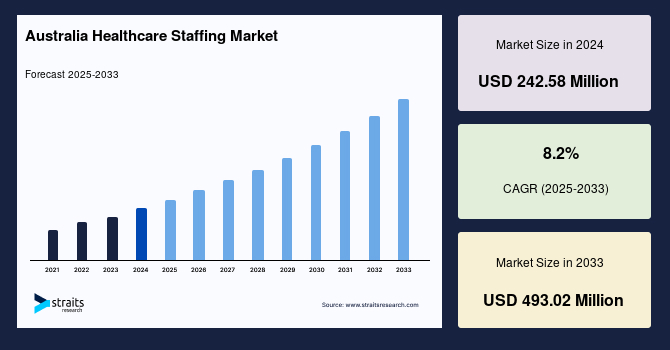
Healthcare is one of the biggest winners under this updated Migration Program. Australia faces an ongoing shortage of doctors, nurses, and allied health workers. The planning levels play a direct role in shaping opportunities for healthcare professionals.
- Priority in Skilled Stream: The Skilled Occupation Lists consistently feature:
- Nurses
- General practitioners
- Specialists consistently
This means they are highly favoured for visas under the skilled migration quota.
- Employer Sponsorship Opportunities: Many overseas healthcare professionals are directly hired through Employer-Sponsored visas. They are recruited for
- Hospitals
- Aged-care facilities
- Clinics
They actively sponsor overseas healthcare staff. The planning levels ensure that places remain open for this.
- Regional Push: Rural and regional areas face the highest shortages. Programs like State and Territory Nominated visas often prioritize healthcare roles. It gives them faster and easier pathways to PR.
- Stable Cap means Stable Demand: The limit remains unchanged at 185,000-cap. This means there are no cuts in healthcare visa allocations. Healthcare professionals looking to migrate can plan with confidence.
Impact in Numbers
In recent years, healthcare professionals have been among the largest groups of permanent migrants under the skilled stream. With Australia’s aging population and growing demand for care, this trend is only expected to strengthen.
In short, if you’re a doctor, nurse, or allied health worker, the Migration Program isn’t just policy. It’s your pathway to a secure career and permanent settlement in Australia.
The Human Impact
Australia’s Migration Program Planning Levels ensure that people’s lives unfold in a way that’s fair, responsible, and forward-looking.
As the nation shifts to four-year planning, we can expect
- Smarter, community-aligned migration
- Focus on long-term goals
- Better infrastructure planning
- Social harmony
It is not just about getting more people in. It's about getting the right people in the right way.
So, if you’re a healthcare professional thinking of migrating to Australia, things just got easier. Start your journey to a fulfilling career now. And with Academically, you can get through the entire process with ease. Get support across the board, from registration exam prep to visa application.
